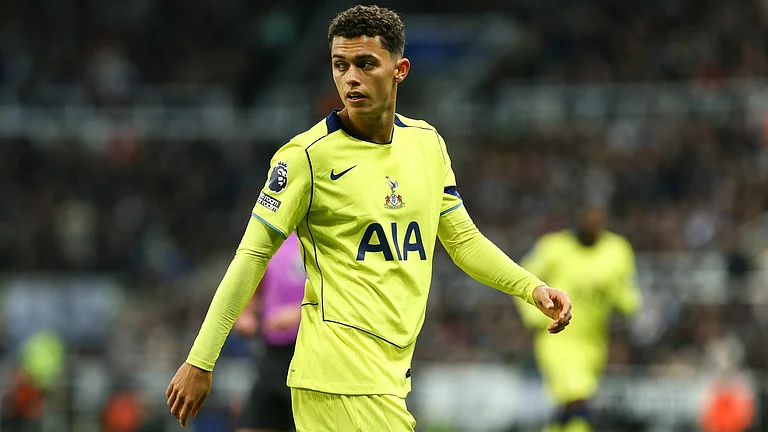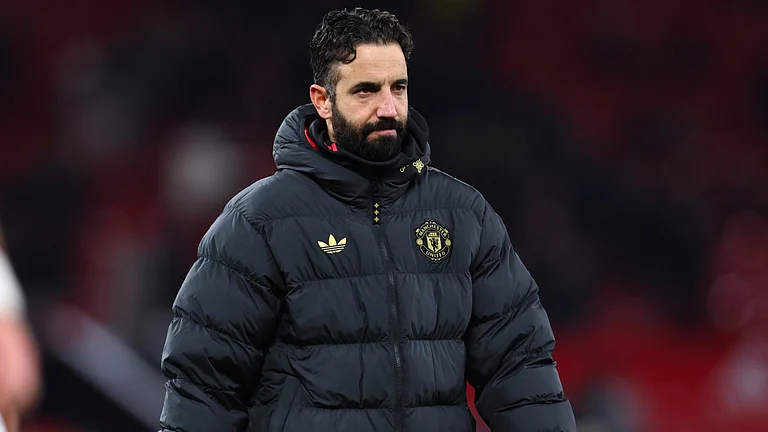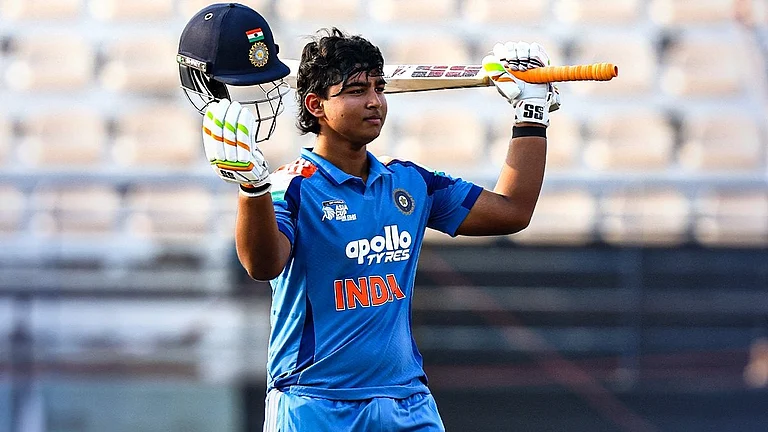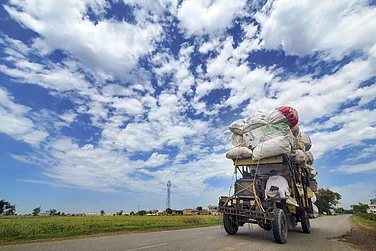“Violence, violence, violence. We don’t like it. We avoid. But violence likes us, we cannot avoid.”
The audience broke into loud cheers when firebrand Muslim leader Riyaz Faringepete uttered these lines from the recent Kannada flick, K.G.F: Chapter 2, during a rally in Mangalore town of coastal Karnataka in May this year. The region has seen periodic communal violence, with both Hindu and Muslim outfits indulging in competitive fundamentalism.
His speech was immediately picked up by local TV channels across Karnataka and played on a loop. “Open threat to Hindus” and “Brazen threat of violence” screamed the headlines that flashed on TV screens alongside the clip of his speech. Like their Hindi counterparts in north India, Kannada television channels highlight religious identities of people in conflicts, run divisive monologues on prime time and make every other debate a slanging match between fundamentalist leaders from Hindu and Muslim communities.
“I did not say anything wrong,” he says. “I said ‘we do not like violence, but violence seems to like us’…What is wrong in that?” he asks. “One cannot simply sit back when one is repeatedly victimised.” Faringepete is the national secretary of the Social Democratic Party of India (SDPI)–the political wing of the Popular Front of India (PFI), a group that many Hindus accuse of spreading Muslim radicalism. Secular activists and moderate Muslim groups, on the other hand, accuse the PFI of breeding a self-defeating victimhood complex among the Muslims.
A complex reality
The victimhood sentiment signifies the organisation’s growing popularity in coastal Karnataka. But Muslims here are rich, educated and upwardly mobile, unlike Muslims elsewhere in India. Since the early 2000s, the region has been the hotbed of communal violence against Muslims and Christians by Hindu vigilante mobs over “love jihad”, conversion and cattle transportation, much before it became a phenomenon across India. The PFI, formed in 2007, soon came to occupy a crucial place in the zone. For Hindu right-wing organisations, the PFI embodies the quintessential fundamentalist Muslim outfit. For many Muslims, it is the sole, unapologetic representative of the community in a region where politicians of all hues dabble between extreme and soft Hindutva politics. For moderate Muslims and Hindus, however, it represents a dangerous phenomenon—an outfit that claims to fight radical Hindutva but is also their mirror-image, which engenders a competitive fundamentalism in the region.
In fact, the three Muslim groups—the PFI, SDPI and CFI (Campus Front of India)—are fast growing in the ever-polarising coastal Karnataka. In July, there were as many as three communally motivated murders in the region.
PFI: Striving to represent Muslims
Observers say that the demolition of the Babri Masjid in 1992 and the 2002 Gujarat riots had a particularly violent impact in coastal Karnataka. “The late 1990s and early 2000s saw a spate of violent attacks on Muslims,” says Phani Raj, an Udupi-based activist and professor. “But the vast sections of ‘seculars’ remained silent.”

“There were riots in Surathkal in 1998, in Mangalore in 2006. Muslim shops and property were vandalised, but there was literally nobody to speak up,” says a Muslim student from St. Aloysius College in Mangaluru. “The PFI filled the vacuum.” The precursor to the PFI in this region was the Karnataka Forum for Dignity (KFD). Formed in 2001, the KFD was staunchly against the RSS, was not shy of street-fights with Hindutva activists and was often involved in moral policing of Muslim girls.
In pushing against the rabid Hindutva forces, the KFD soon became their facsimile. “They spoke the language of the Bajrang Dal. Their idea was to take them head on. They were okay with violence if they saw it as necessary,” says Raj. In 2007, the KFD merged with other Muslim organisations in South India to form the PFI.
Just like Hindutva organisations have sought to be the sole representative of all Hindus, the PFI strives to be the only true representative of Muslims. “Nobody works for Muslims–the Congress, the Left or organisations like the Jamaat-e-Islami,” says Ilyas Muhammed Thumbe, a national general secretary of the PFI. “Only the PFI does.” Thumbe is the “moderate” face of the organisation, but even his words may occasionally border on fearmongering. Between Thumbe and Faringepete, they cover the spectrum of PFI leadership.
Unease with the PFI
Yet, not all Muslims are comfortable with the PFI. “They are pushing Muslims to a corner. They communalise every issue and find a Hindu–Muslim angle in it,” says Mohammad Kunhi, state secretary of Jamaat-e-Islami. “They support issues that the RSS would like them to.”
The hijab issue, which local BJP leaders successfully milked for months, is a case in point. A Mangalore-based Muslim advocate and businessman underlined that the CFI morphed the issue into “a binary that one could not escape”. He says, “The PFI completely eroded the space for any negotiation and made it a pro- or against-Islam issue.” A senior media executive, who wished anonymity, says the organisation is not ready to collaborate with any political party. Both the Congress and the SDPI are equally suspicious of each other. Just like Asaduddin Owaisi’s All India Majlis-E-Ittehadul Muslimeen, the SDPI too is often called the “B-Team” of the BJP for eating into the Congress’ share of the Muslim votes. “It is always only the Muslim parties who are called the B-team of this or that party,” Faringepete says. The SDPI sees not only the Congress but also Muslim organisations like the Jamaat-e-Islami as “too soft”.
Competitive communalism
Muzaffar Assadi, a political science professor at Mysore University, says that the modus operandi of the PFI has striking similarities with that of Hindutva groups. They emerged at the same time as the Sri Ram Sene, Bajrang Dal and other right-wing organisations. “There is indoctrination, there is a feeling that we alone provide you physical security, they espouse Islamic feminism and they do social work,” Assadi says. “They have sneaked into different structures of power—publications, intelligence wings and are strong on campuses. They do what I call competitive communalism.”
But contrary to the picture a section of the media paints of the organisation running secret terror modules, for the PFI, there is little that is behind the scenes. Their style of politics entails shock and awe—street protests, marches and shrill social media campaigns. The organisation also does social work—it provides financial or legal aid to Muslim victims of violence and financial aid for education.
Perhaps that is a reason the organisation is growing steadily. In the 2020 gram panchayat elections, candidates supported by the SDPI won as many as 225 seats. In December last year, the party won six seats in urban local body elections. With elections in Karnataka due next year, the SDPI plans to contest every seat across the state.
There is a unity march every year, in which young men wearing blue military-like uniforms, holding drums and sticks or PFI flags parade. “The visual is a show of strength. But there is an obvious, perennial sense of minority-ism that it also creates,” Assadi says.
For Karnataka, there is no easy way to peace.
(This appeared in the print edition as "Filling the Vacuum")
(Views expressed are personal)
Sanya Dhingra is a journalist and graduate student, South Asian Studies, Columbia University, New York






















